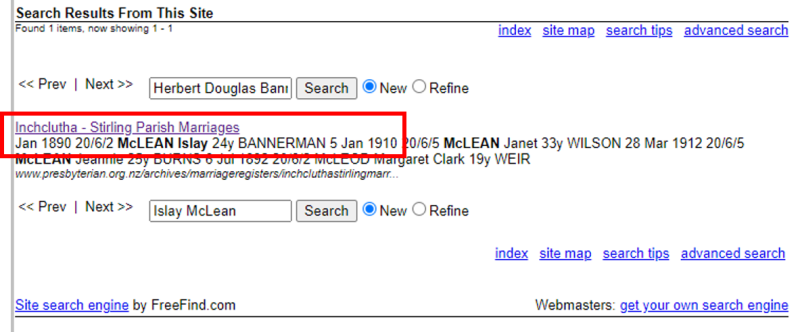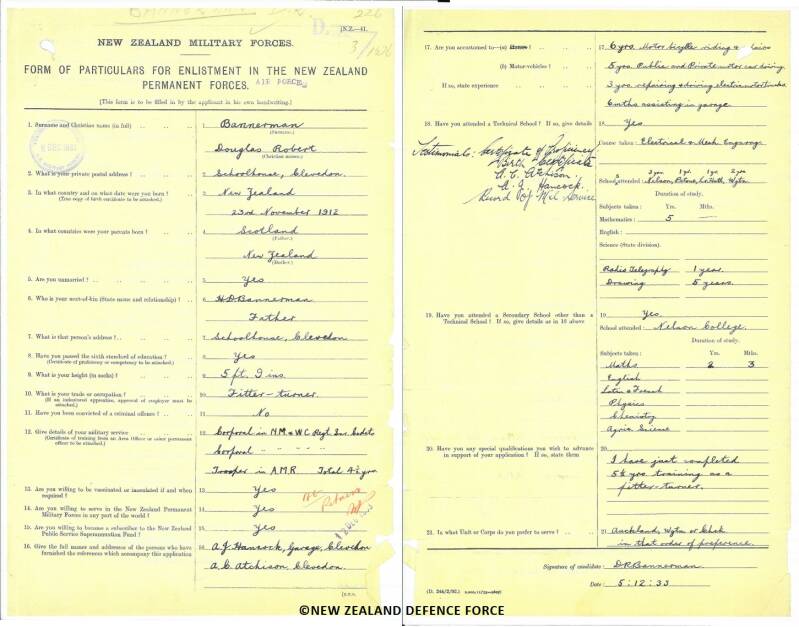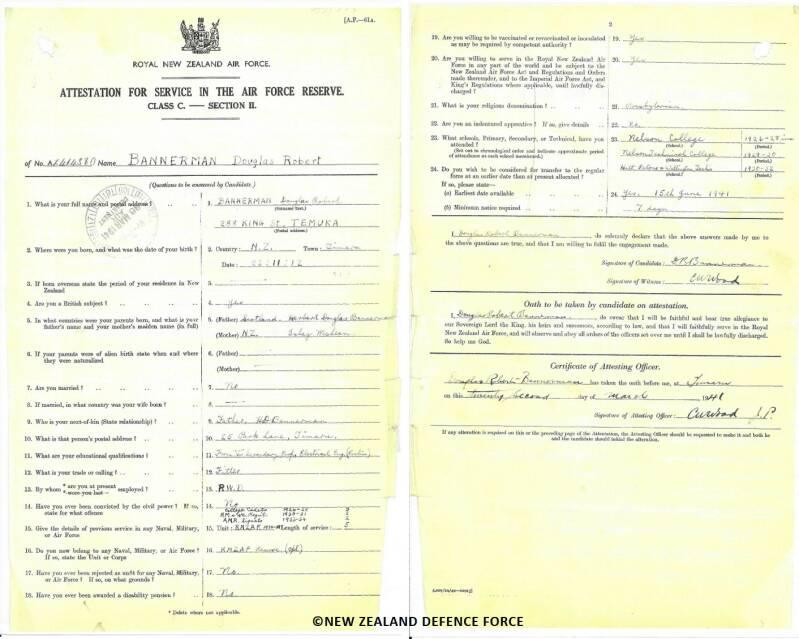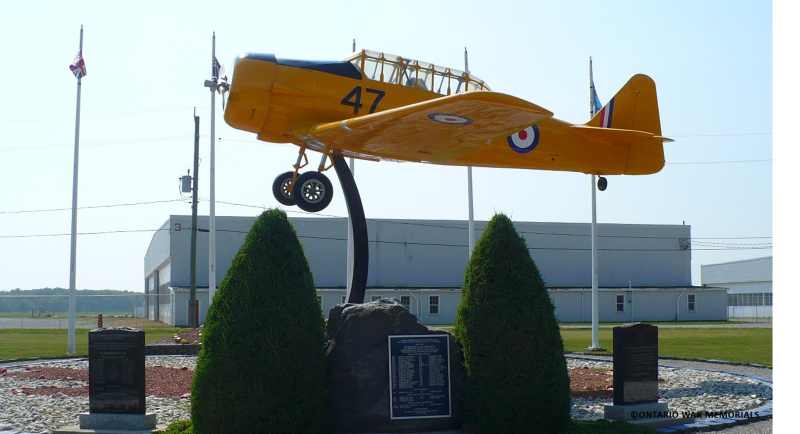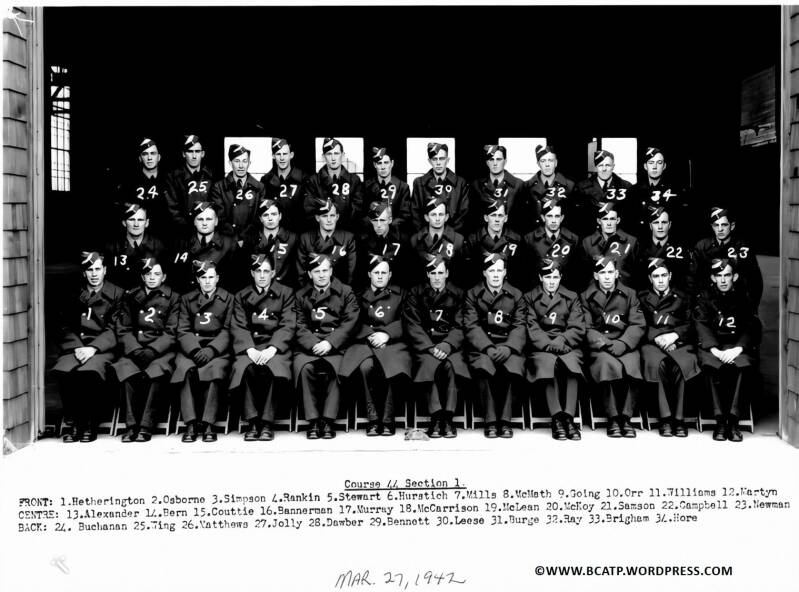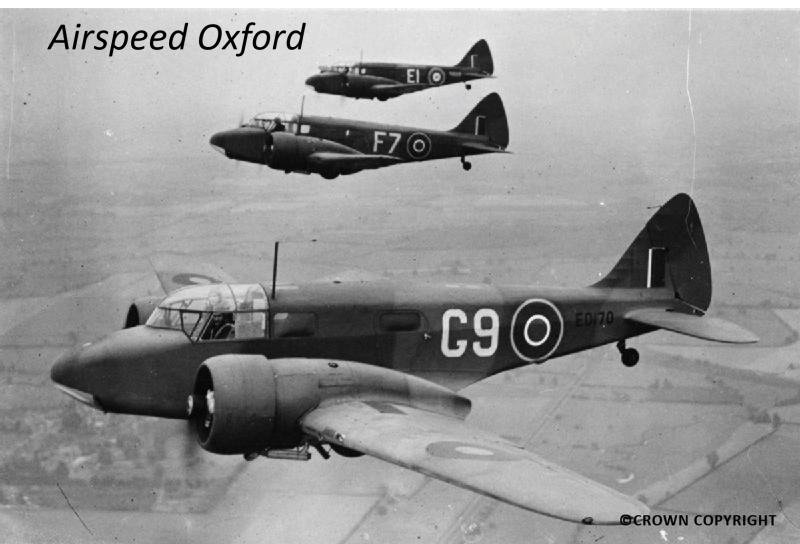Flying Officer Douglas Robert Bannerman
2nd Pilot
* 23 November 1912 Timaru New Zealand
† 21 December 1942 Elst UT
Son of Herbert Douglas and Islay Bannerman of Timaru, Canterbury, New Zealand
Royal New Zealand Air Force
Service nr. 1119267
467 Squadron
Unfortunately I have not been able to find any family of Douglas Robert Bannerman so far. Many thanks to the staff of the Air Force Museum of New Zealand, they were very helpful. Also thanks to the New Zealand Defence Force for sending Bannerman's files with a lot of information. And thanks to Vincent Holyoak for sharing the pages of James Lee's logbook.
Is there anyone in New Zealand or Scotland who can tell me more about this family??
Any help is greatly appreciated!!
Click an image to enlarge
....with their children Jane(24), George(20), Patrick(16), John(14), Herbert(11), Edmund(8), Henrietta(7) and Dorothea(3).
See the passengerlist.
Herbert Douglas Bannerman married Islay McLean on Januari 5, 1910.
November 23, 1912, Douglas Robert Bannerman was born.
Douglas Robert Bannerman was employed as a fitter and turner by the New Zealand Government Railways. In 1933 he applied for service in the New Zealand Permanent Air Force, see the application form on the left.
From 1934 till 1939 he served as a fitter/rigger.
After this five year's engagement he applied for war service in the Royal New Zealand Air Force, see the application form on the left.
He was enlisted on the 27th of July 1941, at the Initial Training Wing, Levin, and was posted to No.3 Elementary Flying Training School at Harewood on the 7th of September 1941.
Click an image to enlarge.
On the 17th of November 1941 S.S. Monterey sailed from Auckland, New Zealand. On board many Royal New Zealand Air Force personnel including Douglas Robert Bannerman. The destination is San Francisco, United States.
One of the other servicemen on board was Andrew James Newell Scott. Andrew Scott was killed in action when Stirling R9250 crashed in Ingen Holland, on the 3rd of February 1943. Click the button below for remarkable similarities.
The ship arrived in San Francisco on December 1, 1941.
A voyage of about 5.700 nautical miles / 10.500 kms.
From San Francisco Bannerman travelled to Dunnville, Ontario, Canada, via Blaine in the North West of the United States. A distance of about 3.675 miles / 5.880 kms.
He was posted to No. 6 Flying Training School at Dunnville, Ontario, on the 9th of December 1941, where on the 27th of March, 1942, he was awarded his flying badge. According to this document Bannerman was trained on the Harvard and Oxford at No. 6 Flying Training School.
However, in March 1942 there were no Oxford aircraft at No. 6 Flying Training School Dunnville, just Yales and Harvards for training and some other aircraft in storage. A Yale is an earlier version of the Harvard and has a fixed undercarriage.
Possibly a mistake in the previous document. Probably he trained on the Oxford at RAF South Cerney in England.
The date of the previous photo, March 27 1942, is probably incorrect. That day Bannerman was in Hamilton Military Hospital as can be seen in the document on the left. He was taken to hospital on March 21, 1942 with Scarlet Fever and was in isolation. He was discharged on April 16, 1942.
On March 27, 1942, he was awarded his flying badge and promoted to the rank of Sergeant but on the same day he got the rank of Pilot Officer.
(On the 1st of October 1942 he was promoted to Flying Officer)
Next was a journey of about 1.900 kms, 1180 miles, from Dunnville, Ontario, to Halifax, Nova Scotia.
On May 10, 1942 Bannerman embarked in Halifax, Nova Scotia. Till now it is unknown to me which ship and where he disembarked in the United Kingdom, could be Liverpool or Glasgow.
Note: 3 PRC 9.5.42 is wrong, he arrived there on 23.05.1942
Anyway, it was a journey of about 4.400 kms, 2400 nautical miles, through the dangerous waters of the North Atlantic.
On May 23, 1942 Bannerman arrived at No.3 Personnel Reception Centre in Bournemouth, one of the seven Pilot Officers arriving that day.
On June 30, 1942 he was posted to No. 3 Advanced Flying Unit, RAF South Cerney, where he was trained on the Airspeed Oxford.
On August 4, 1942 he was posted to No. 27 Operational Training Unit, RAF Lichfield, where he crewed up and completed his training on the Wellington bomber.
On October 1, 1942, he was promoted to Flying Officer.
On November 7, 1942 he was posted to No. 467 Squadron, RAF Scampton. Before commencing operational flying he carried out a conversion course with No. 49 Conversion Flight, where he converted to the Avro Manchester bomber.
On the left two pages of James Lee's logbook. James Lee was Flight Engineer in the Bannerman crew. In November they trained on the Manchester.
In December they converted to the Lancaster.




